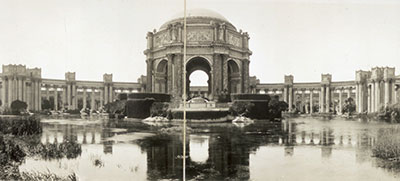Video games are more than just code and gameplay mechanics; they are immersive worlds brought to life through the power of art. From the vibrant landscapes of open-world adventures to the intricate character designs of RPGs, video game art design is the visual foundation upon which engaging gaming experiences are built. This comprehensive guide delves into the multifaceted world of video game art design, exploring its various disciplines, creative processes, and the crucial role it plays in shaping the player’s journey.
Defining Video Game Art Design: A Symphony of Visual Elements
Video game art design is the process of creating the visual elements that contribute to the overall aesthetic and feel of a video game. It encompasses a wide range of disciplines, from concept art and character design to environment art and UI design. The goal of video game art design is to create a cohesive and visually compelling experience that enhances gameplay and immerses the player in the game’s world.
Disciplines Within Video Game Art Design: A Team of Specialists
Creating a visually stunning video game requires a team of talented artists specializing in different areas:
- Concept Art: Concept artists develop the initial visual ideas for the game, including characters, environments, and props. They create sketches, paintings, and 3D models to establish the visual style and direction of the game.
- Character Design: Character designers are responsible for creating the visual appearance of the characters in the game. They consider the character’s personality, backstory, and role in the game when designing their appearance.
- Environment Art: Environment artists create the backgrounds and landscapes of the game world. They build 3D models, create textures, and design the overall layout of the environments.
- Prop Design: Prop designers create the objects and items that populate the game world, such as weapons, furniture, and vehicles. These props add detail and realism to the game environment.
- UI/UX Design: UI/UX designers are responsible for creating the user interface and user experience of the game. They design the menus, HUD elements, and other visual elements that the player interacts with.
- Animation: Animators bring the characters and environments to life through movement. They create animations for character actions, environmental effects, and other visual elements.
- Technical Art: Technical artists bridge the gap between art and technology. They optimize artwork for performance, create shaders and materials, and ensure that the art assets work seamlessly within the game engine.
The Creative Process: From Concept to Completion
The video game art design process typically follows a series of stages:
- Concept Development: The initial stage involves brainstorming ideas, researching visual references, and developing the overall art style for the game.
- Sketching and Iteration: Artists create numerous sketches and iterations of characters, environments, and props, refining their designs based on feedback and direction.
- 3D Modeling: 3D modelers create digital models of the art assets using specialized software.
- Texturing and Materials: Artists create textures and materials to give the 3D models a realistic or stylized appearance.
- Rigging and Skinning: For characters, the 3D models are rigged and skinned to allow for animation.
- Animation: Animators create the movements and actions for the characters and other animated elements.
- Integration: The art assets are integrated into the game engine, where they are combined with gameplay mechanics and other elements.
The Importance of Visual Style: Setting the Tone
The visual style of a video game is crucial for creating a distinct and memorable experience. It sets the tone and mood of the game and helps to immerse the player in the game world. Visual styles can range from realistic and gritty to cartoonish and whimsical, depending on the game’s genre and target audience.
The Role of Color Theory: Evoking Emotions
Color theory plays a vital role in video game art design. Colors can evoke different emotions and create a sense of atmosphere. Artists carefully choose colors to enhance the mood and convey the desired message to the player.
Lighting and Composition: Guiding the Player’s Eye
Lighting and composition are essential elements of visual storytelling. Artists use lighting to create depth, highlight important elements, and guide the player’s eye through the scene. Composition refers to the arrangement of visual elements within the frame, which can be used to create a sense of balance, harmony, or tension.
User Interface and User Experience: Enhancing Player Interaction
The user interface (UI) and user experience (UX) are crucial for player interaction. UI designers create the visual elements that the player interacts with, such as menus, HUD elements, and dialogue boxes. UX designers focus on creating a smooth and intuitive experience for the player. A well-designed UI/UX can enhance gameplay and make the game more enjoyable.
Technical Considerations: Optimizing for Performance
Video game art design must also consider technical limitations. Art assets need to be optimized for performance to ensure that the game runs smoothly on the target platform. Technical artists play a crucial role in this process, ensuring that the art assets meet the technical requirements without sacrificing visual quality.
Collaboration and Communication: A Team Effort
Creating video game art is a collaborative process. Artists work closely with designers, programmers, and other team members to ensure that the art assets integrate seamlessly with the gameplay and other elements of the game. Effective communication is essential for a successful project.
The Evolution of Video Game Art Design: A Constant Transformation
Video game art design has evolved significantly over the years, driven by advancements in technology and changes in player expectations. From pixel art to photorealistic graphics, the visual landscape of video games is constantly transforming.
The Impact of Video Game Art Design: Shaping the Gaming Experience
Video game art design has a profound impact on the player’s experience. It can create a sense of immersion, evoke emotions, and enhance gameplay. The art design is often one of the most memorable aspects of a video game. A well-crafted visual experience can elevate a game from a simple pastime to a truly unforgettable journey. Video game art design is not merely decoration; it’s an integral part of the game development process. It’s the visual language that communicates the game’s story, atmosphere, and mechanics to the player. By understanding the principles of art, technology, and player psychology, video game artists create worlds that captivate, inspire, and entertain. The power of video game art design lies in its ability to transport players to other realms, allowing them to explore, interact, and become immersed in captivating narratives. It’s a testament to the creativity and skill of the artists who bring these virtual worlds to life.












